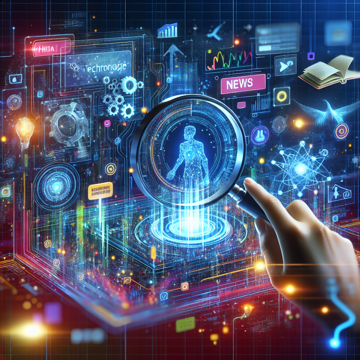When Robots Read Your Mind, Google Makes You Superhuman, and Fusion Powers It All: The Techquake of 2025

Brace yourself—because 2025 isn’t just the year technology levels up. It’s the year tech gets a mind, a body, and enough power to run the world. Forget “the future”—this is the sci-fi fever dream coming to life in your backyard, factory floor, and even your brain.
Let’s start at the bleeding edge: Google’s Gemini AI is on a mission to be the ultimate digital sidekick, handling everything from finding your next apartment to ghostwriting your texts. But Google isn’t stopping with chatbots—its new AI-powered XR glasses promise to slap an augmented reality overlay right onto your world, while Project Astra aims to make AI a seamless, all-knowing assistant. And if you thought search engines were just for stalking your ex, think again: Google's new AI-driven search now handles tasks so complex they might make your own brain jealous [1].
But what if you didn’t have to tap, swipe, or even speak to command your gadgets? Apple’s making that leap by quietly weaving brain-computer interfaces into its devices, thanks to a partnership with Synchron. Imagine controlling your iPhone or Vision Pro just by thinking—yes, for real. Their Stentrode device, currently in early tests, already lets ALS patients use their intent to operate Apple gear. It’s slow, sure, but even the lag is shrinking as engineers tweak the tech. The race is on: Apple and Neuralink are dueling to make direct mind-to-machine control as routine as scrolling Instagram [2].
Now, if you’re picturing all these AI agents, mind-controlled gadgets, and AR glasses running on your local power grid, think again. The real game-changer is happening in a nondescript warehouse near Boston, where Commonwealth Fusion Systems is building a nuclear fusion reactor that can fit in a factory yet burn as hot as the sun. The tokamak machine, cranking atoms together in a supercharged magnetic field, could soon spit out more energy than it eats. If the magnets hold up, that means virtually limitless, waste-free, climate-friendly electricity—just in time for the AI explosion that’s about to gobble up every watt you’ve got [3].
Of course, none of this matters if your machines run out of juice. Enter CATL’s Naxtra batteries: sodium-ion cells that laugh in the face of cold, keep 90% charge even at -40°C, and ditch rare, costly lithium for abundant sodium. They’re the first of their kind to hit mass production, and with dual-power architectures, they let electric vehicles and heavy trucks adapt to any scenario—short hops, long hauls, or deep freezes. The “multi-power era” isn’t just for cars; it’s about energy freedom across every device and industry [4].
And who’s going to put all these pieces together? Meet the humanoid robot. Boston Dynamics’ all-electric Atlas is clocking in at Hyundai factories this year, ready to lift, shift, and out-hustle human workers. Meanwhile, Apple and Meta are rumored to be cooking up their own bots, and the humanoid revolution is set to be a $38 billion industry by 2035. These robots aren’t just about brute force—they’re about flexibility, ready to tackle whatever job the factory, warehouse, or home throws at them. Just don’t expect perfection yet: Tesla’s Optimus is still getting its robot legs, especially as rare-earth export battles threaten supply chains [5].
So if you’re still waiting for the “real” future to arrive, newsflash: It’s already moving in, setting up shop, and rewriting the rules on power, intelligence, and what it means to be human.
1. https://www.nbcnews.com/tech/innovation/live-blog/google-io-2025-live-updates-rcna207747
2. https://www.gadgets360.com/others/news/apple-synchron-brain-computer-interface-bci-iphone-vision-pro-development-report-8412711
3. https://edition.cnn.com/2025/05/06/climate/nuclear-fusion-commonwealth-tokamak-breakthrough
4. https://finance.yahoo.com/news/naxtra-battery-breakthrough-dual-power-143600320.html
5. https://www.wired.com/story/2025-year-of-the-humanoid-robot-factory-worker/